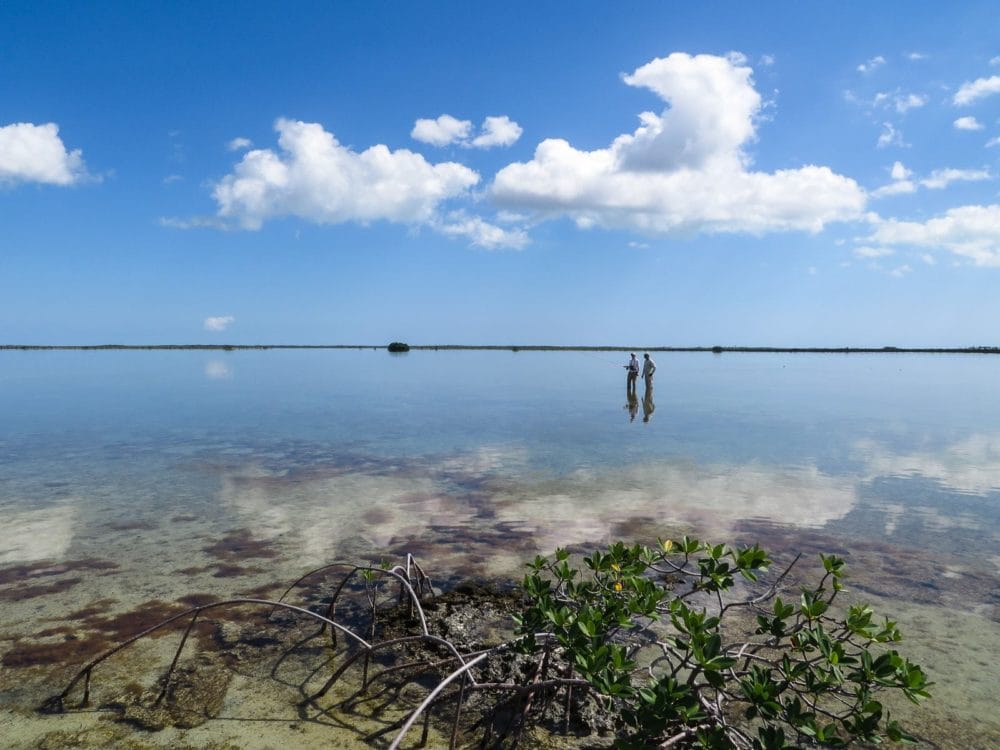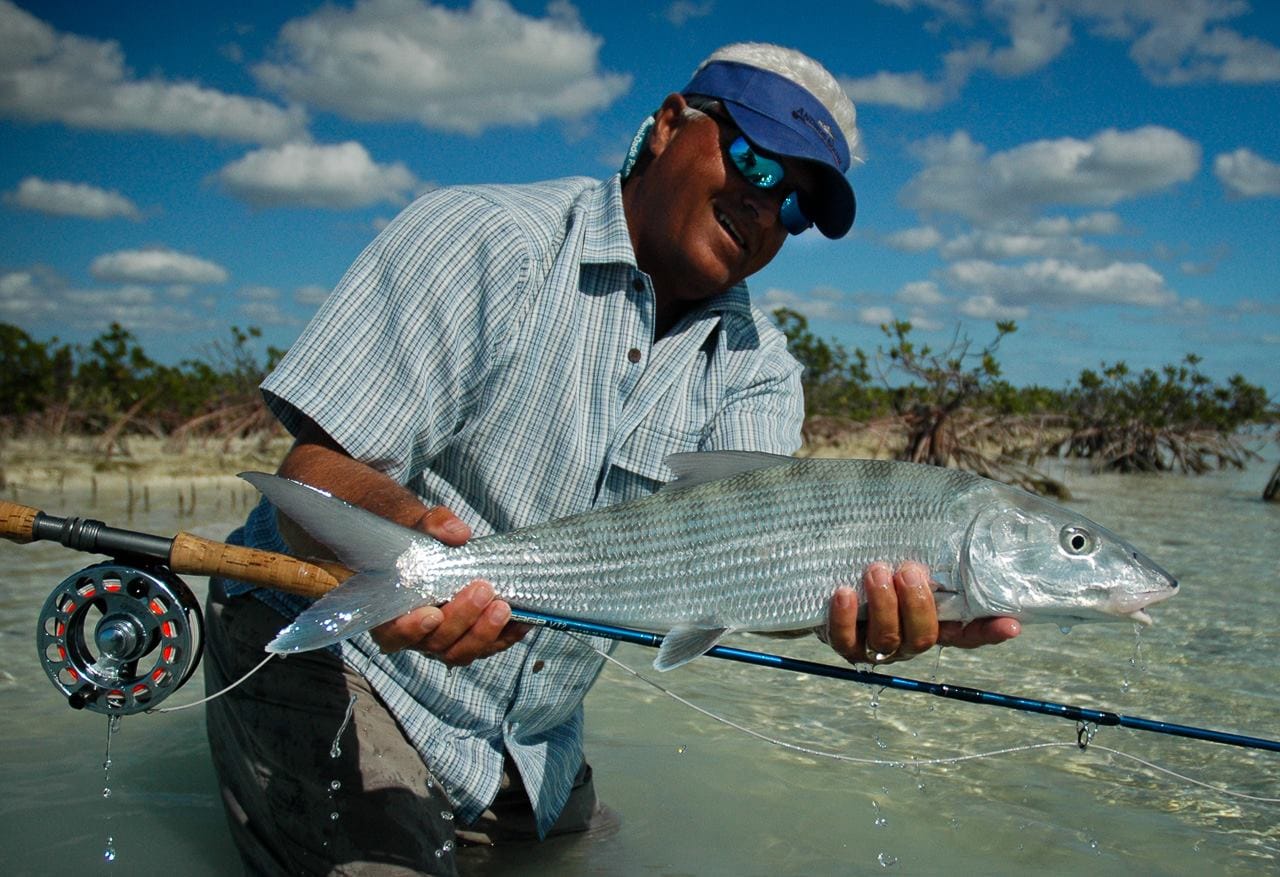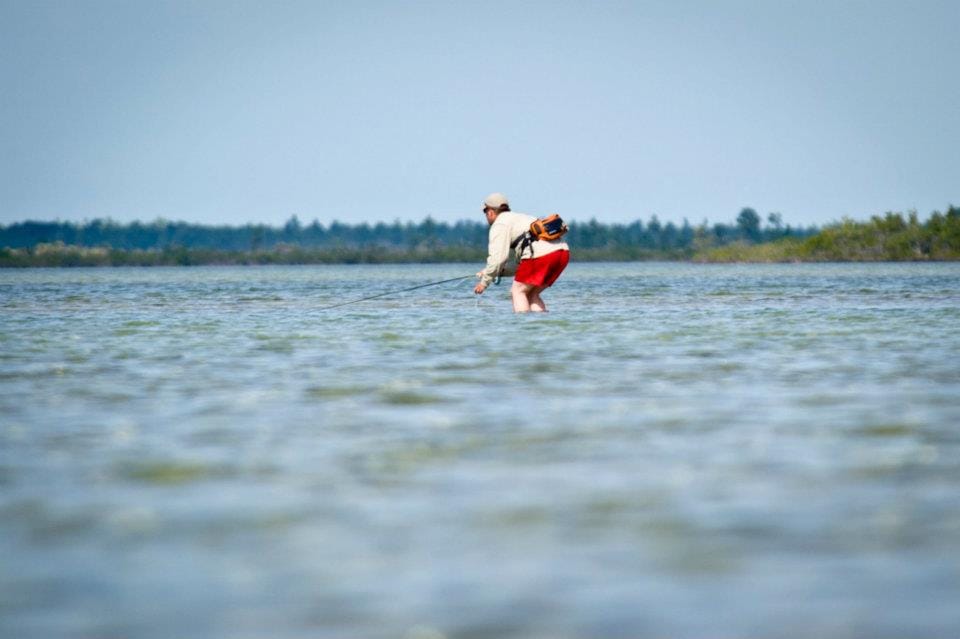The best tides for catching bonefish are always destination-specific, but to those heading the Andros Island in the Bahamas, take note.
What is a Good Tide?
In most general terms, a ‘good tide’ is one in which there’s a decent amount of ‘moving water’, or tidal flow, during the time that you’re fishing. Moving water moves the food around, which moves the fish around, and moving water also changes the areas on a flat that have the correct depth for bonefish to feed, which again moves the fish around.
Slack is Bad
Usually, fishing slows down when the tide is slack – at either the high or low end of the tide cycle. That’s first and foremost because there’s not much moving water, but high slack and low slack also have their own issues.
On a high tide, many flats are flooded, which means that there’s a fair amount of water up into the mangroves, which means that bonefish can go way into the mangroves to feed. It is a very safe place for them to feed in the mangroves because they’re protected from predators. If you’ve ever poled along a mangrove edge and heard fish tailing 100 feet into the mangroves, you know this can be a frustrating situation.
On a low tide, many flats are dry or so shallow that bonefish can’t swim on them, which forces the fish to group up in the channels or move off into deeper water – neither of which are very compelling angling situations. We want fish spread out, cruising along the flats.
So, a ‘good tide’ day might be, for example, a day where you start fishing just as the tide starts to come in, and the tide comes in all day. A ‘bad tide’ day might be a day where you start fishing just as the outgoing tide is finishing, fish through a low, slack tide, and knock off just as the tide starts coming back in. It’s better to have more time with moving water.
There Are Lots of Exceptions
Before we talk about some of the ways that it’s more complicated than just the stage in the tide, we should point out that there are many, many exceptions to what we’ve covered. Fisheries vary a lot, and individual flats vary a lot. Some flats fish better on a high tide. Some flats fish better on a low outgoing tide. Some flats fish better on a high incoming tide. Distance from deep water, the structure of channels around a flat, size and shape of the flat all play a factor in a flat fishing well.
Predicting the Water Level
Multiple variables impact the water level on a given flat at a given time, and the timing of the tide is only one of them. The wind has a significant impact on water levels, particularly in places like Andros Island, where the area covered by the tide is vast compared to the vertical drop of the tide. If the wind is blowing in the same direction that the tide is flowing, it will tend to accelerate and/or strengthen the size of the tide. If the wind is blowing in the opposite direction that the tide is flowing, it will tend to slow down and/or weaken the size of the tide.

Tides on Andros Island
They’re complicated! Andros Island is a big island with a massive system of flats around it. It’s got really deep (5,000 feet +) water just a mile to the east and a considerable bank just to the west. It’s cut up by several giant waterways (the Bights) and a bunch of smaller creeks, many of which are very windy and feed water to various areas of flats. Because of all this structure, the path the tide flows to different flats varies hugely. One flat might be right up against deepwater; another flat might get its flow via a windy, 15-mile meander through the creeks. This variation means that the timing of any given tide varies a lot depending on where you are on the island. It takes time for the tide to flow, so the distance from deep water impacts the timing of the tide.
You can pull back and see this at a high level when you look at South Andros Island as a whole. In general – this is a little hard to get your head around at first – when it’s high tide on the east side of South Andros, it’s low tide on the West Side. In between, the tide will be at varying stages of incoming and outgoing, depending on where you are – and the creeks wind around so much and interconnect so much that the change doesn’t even occur consistently as you move in one direction. Is your head starting to hurt yet?
This is a fantastic thing when it comes to a day or a week of bonefishing. Why? Because, due to all the incredible variation in the tides across different parts of our island, our guides can find almost any given tidal condition at any given time. We don’t need to wait out ‘bad tides’ or slack water – we can just move and find better tides somewhere else.
Sometimes conditions change, and our guides aren’t perfect. Even after 20 years on the flats of Andros South, they’re sometimes surprised by the amount of water on a given flat when they arrive. But still – the ability to tailor a fishing day around different tidal conditions on other parts of the island is a game-changer when it comes to consistently delivering quality bonefishing days.
For more information about Andros South lodge and The Bahamas in general please contact Alex Jardine or call our office on +44(0)1980 847389.


